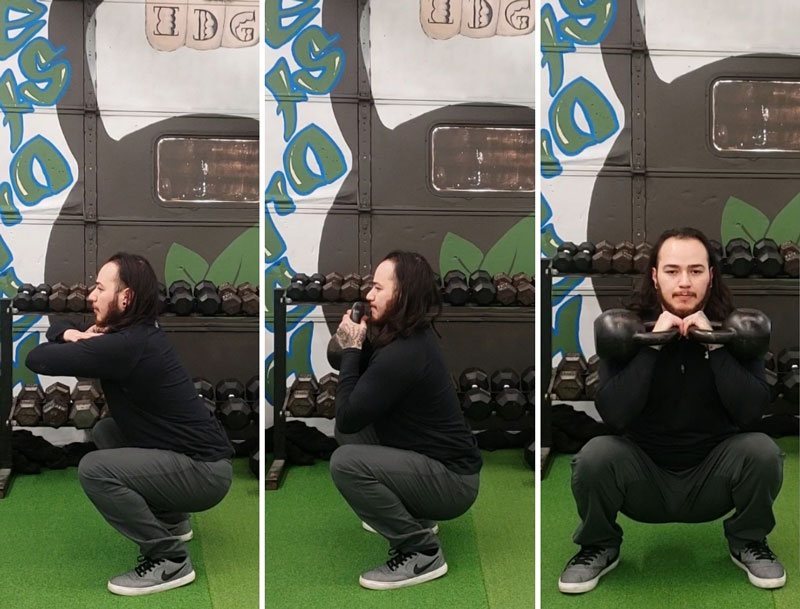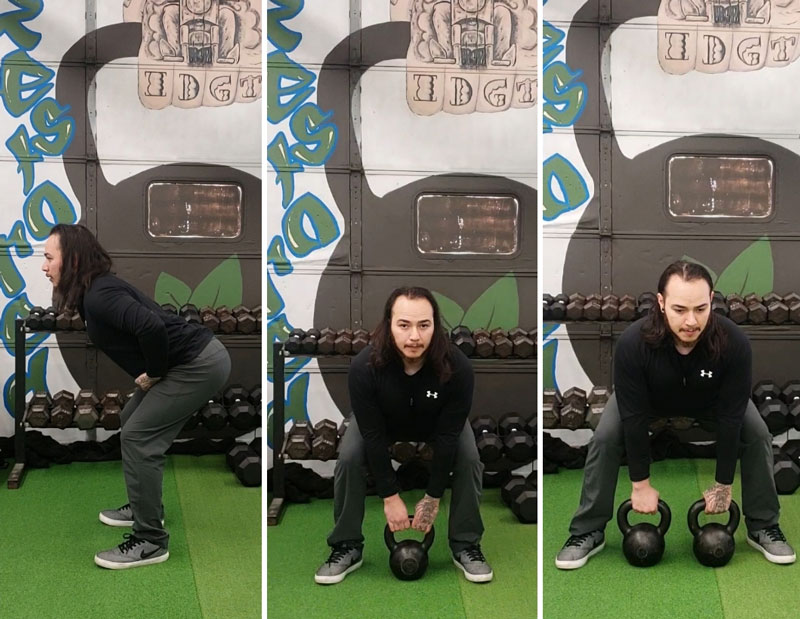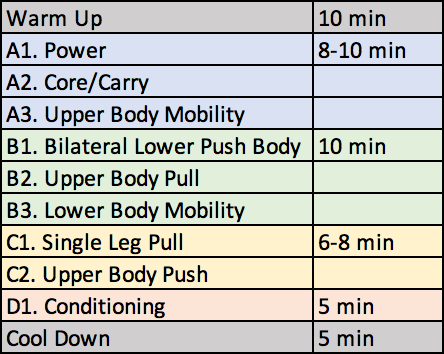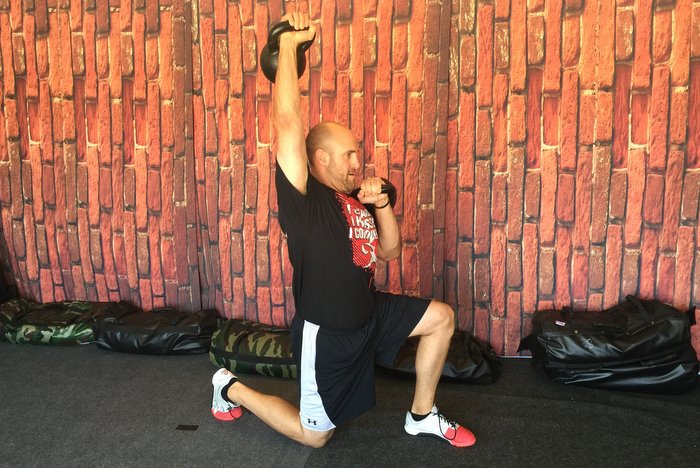
We can all agree that group training can come with inherent risks if the participants are not coached effectively. Unfortunately, we have all also seen group fitness classes where students are performing rough looking swings, squatting with all of their weight on their toes, or deadlifting like frightened cats!
As coaches, it’s our responsibility to make sure that we always prioritize the safety of our clients and set them up for success in their training. It can be difficult to accomplish a level of high quality training in large groups—especially since groups tend to include people with different skill and fitness levels, past injuries, learning styles and other variables.
So, how do we control the chaos in group training—especially if we are using kettlebells? We begin by learning to regress and progress movements and exercises for our clients. Many coaches will choose a baseline exercise—and also have a regression and progression on hand to modify the workout or program as necessary.
How to Regress and Progress Kettlebell Exercises
Regressing and progressing an exercise for a given client can be complicated if you are not prepared. During an RKC certification workshop, you will learn many ways to regress and progress the Big Six for a variety of a clients. With the information from the weekend workshop—and reviewing your RKC manual—you’ll have many ways to cue, correct, and ultimately guide your clients through the progressions of the Big Six.
To begin, choose a baseline exercise—for example, a kettlebell deadlift, assuming a majority of your clients in class can do it. From the baseline exercise, choose one regression and one progression.
With our kettlebell deadlift example, the regressions might be raising the kettlebell on a yoga block, having practice an RDL, or if they’re absolute beginners or very deconditioned, they could work on fully mastering the hip hinge. You are the chef in your own kitchen and must decide what is best for your situation.
To progress the kettlebell deadlift, we can have clients perform double kettlebell deadlifts, eccentric deadlifts, explosive deadlifts, and many other advanced variations which can make this exercise more challenging. It’s always less of a mental challenge to make an exercise more difficult—it’s much more challenging to make exercises easier. Develop a collection of progressions and regressions to commonly use with your clients then modify them as needed for your specific group setting(s).

Selecting the Correct Exercises
Choosing appropriate exercises is crucial for designing and evaluating your programs. While there are thousands of exercises you can choose for training your clients, all of the different tools and implements can lead to overly complicated workouts.
To simplify this process, begin by categorizing the exercises under consideration by movement pattern. For example, I might consider an exercise to be one of the following: lower body pull, upper body push, lower body push, upper body pull, mobility, single leg knee/hip, or core/carry. There are other classifications you can use, but this is what I use for my business.
Instead of trying to include every exercise you can think of, consider the population you are serving and their needs. Also take a look at what exercises you are typically programming for them. Keep it simple. If you’re work with general populations, your exercise selection will be minimal. This is extremely helpful when working with a group of clients who have different athletic abilities. Some clients will be more advanced than others, and some may have never touched a kettlebell before! It’s useful to have a systematic approach for running your classes.
Using Timed Blocks
When I first started leading group classes, I had a difficult time programming the workouts with just straight sets. The participants all moved at different paces, some people needed more coaching while others rushed through the workouts. There’s nothing wrong programming straight sets, but it can be difficult in a group class with a variety of fitness levels.

Using set blocks of time can help create a controlled environment for smoothly running classes. Set blocks of time allow you to attend to those who need extra coaching or attention, while allowing for clients moving at a faster pace to get more volume in their workouts—instead of finishing their set and waiting to move on.
Timed Training Session Example:
- Warm Up together, 10 minutes
- Block A 8 minutes
- Block B 10 minutes
- Block C 6 minutes
- Block D 5 minutes
- Cool Down, 5 minutes
While this example works very well for my group classes, please be sure to consider the individuals you are training in your group(s).
Having systems and structures to organize your programming is essential to running an effective kettlebell group class. Begin by choosing appropriate baseline exercises, choosing progressions and regressions for each, then breaking the session into timed intervals.
****
William Sturgeon, RKC II trains clients at his gym, Restored Strength. Contact him through his website at RestoredStrength.com or follow him on Facebook: facebook.com/restoredstrength
